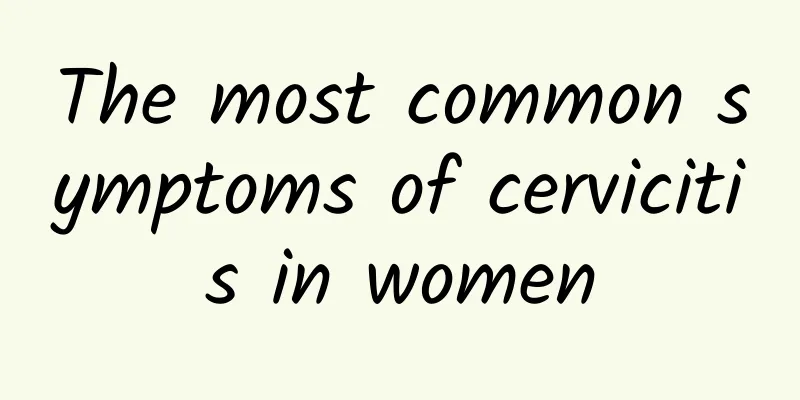What causes pelvic inflammatory disease?

|
The causes of pelvic inflammation are generally various common clinical surgeries. If anti-inflammatory treatment is not taken in time after surgery, symptomatic treatment will lead to pelvic inflammation. If vaginal inflammation and cervical inflammation are not treated in time, retrograde infection will lead to pelvic inflammation. Generally, feeling cold, poor body resistance, and invasion of various bacteria and viruses can also lead to pelvic inflammation. After the onset of pelvic inflammatory disease, lower abdominal pain, lower abdominal swelling, and anal swelling will occur, so pelvic inflammatory disease should be actively treated. If not actively treated, it will lead to chronic fallopian tube inflammation and future infertility, so pelvic inflammatory disease must be actively treated, which can be treated with oral medications or anti-inflammatory drugs. What are the symptoms of pelvic inflammatory disease? Pelvic inflammatory disease is a group of diseases caused by inflammation of the female upper reproductive tract, including endometritis, salpingitis, tubo-ovarian abscess, and pelvic peritonitis. It usually presents with lower abdominal pain, accompanied by lumbar pain. It worsens with fatigue or activity. Vaginal discharge increases and has a peculiar smell. During gynecological examination, there is uterine tenderness, adnexal tenderness, cervical lifting pain, sometimes fever, cervical or vaginal purulent discharge, and elevated C-reactive protein levels. What department is pelvic inflammatory disease? Pelvic inflammation is usually checked in a hospital and seen in a gynecological clinic. It is a gynecological disease and a common disease in women. Pelvic inflammation can manifest as lower abdominal pain, lower abdominal swelling, anal swelling, etc. In severe cases, abnormal secretion and vulvar itching may occur. In this case, you usually need to go to the hospital for conditioning and choose the appropriate treatment method according to the situation. You can take oral Chinese medicine, or Chinese patent medicine for symptomatic treatment, or use Chinese medicine enema plus physical therapy for symptomatic treatment. The diagnosis of pelvic inflammation is generally to go to the hospital for color Doppler ultrasound and gynecological diagnosis, which can clearly diagnose. Color Doppler ultrasound can show a large amount of fluid accumulation in the pelvic cavity. Gynecological examinations can show uterine tenderness and rebound pain, so pelvic inflammation is a gynecological disease. |
<<: How to get pregnant with adenomyosis
>>: What are the advantages of nasal endoscopy in treating nasal polyps?
Recommend
Is primary amenorrhea hereditary?
Primary amenorrhea may be related to genetic fact...
What is a giant uterine leiomyoma? Can a giant leiomyoma be treated?
What is a giant uterine leiomyoma? Can a giant le...
A brief analysis of common methods of treating ectopic pregnancy
Ectopic pregnancy is a serious disease that endan...
What symptoms may occur during perimenopause?
The perimenopause period is from the transition p...
What are the causes of uterine fibroids in women? How are uterine fibroids caused?
Nowadays, many women suffer from some gynecologic...
What should patients with uterine fibroids pay attention to after laparoscopic surgery?
The precautions after laparoscopic surgery for ut...
Can endometrial polyps be treated with outpatient surgery?
For larger or continuously progressing endometria...
Are there any traditional Chinese medicine granules for treating irregular menstruation?
Irregular menstruation is a common gynecological ...
What are the symptoms of hydatidiform mole during pregnancy
Molar pregnancy is a rare pregnancy complication....
What are the harms of staying up late on uterine fibroids? Does staying up late have any effect on patients with uterine fibroids?
What are the harms of staying up late on uterine ...
Brief analysis of the causes of chronic pelvic inflammatory disease
Chronic pelvic inflammatory disease is a common t...
How to treat uterine fibroids? How to treat uterine fibroids?
How to treat female uterine fibroids? Uterine fib...
What causes uterine fibroids? Excessive pressure can also cause uterine fibroids
Uterine fibroids are a disease that seriously end...
Some common symptoms of pelvic inflammatory disease patients
There are many kinds of gynecological diseases, a...
What are the main symptoms of female cervical erosion? Introduction to the clinical manifestations of female cervical erosion
Cervical erosion is the most common local feature...









